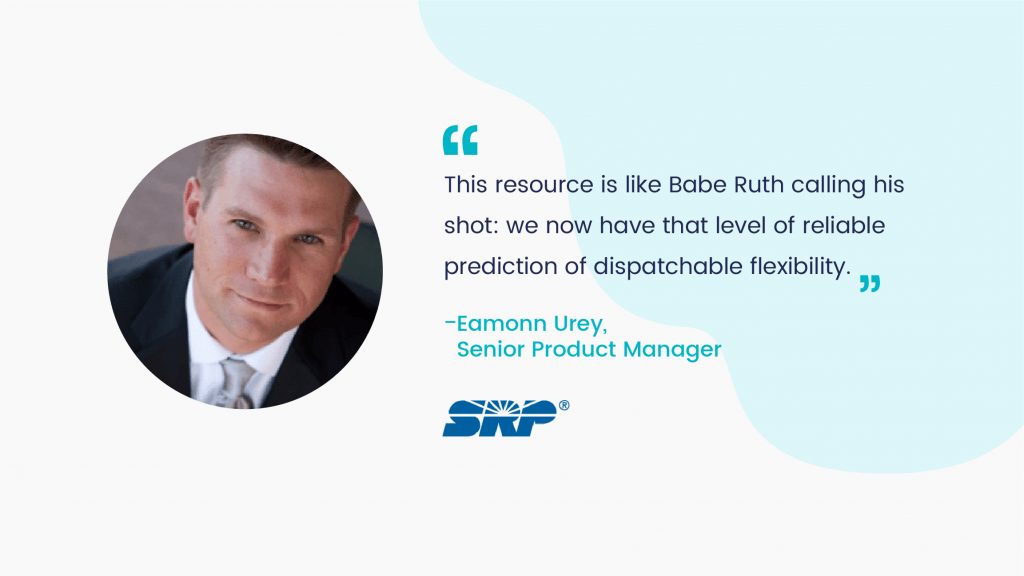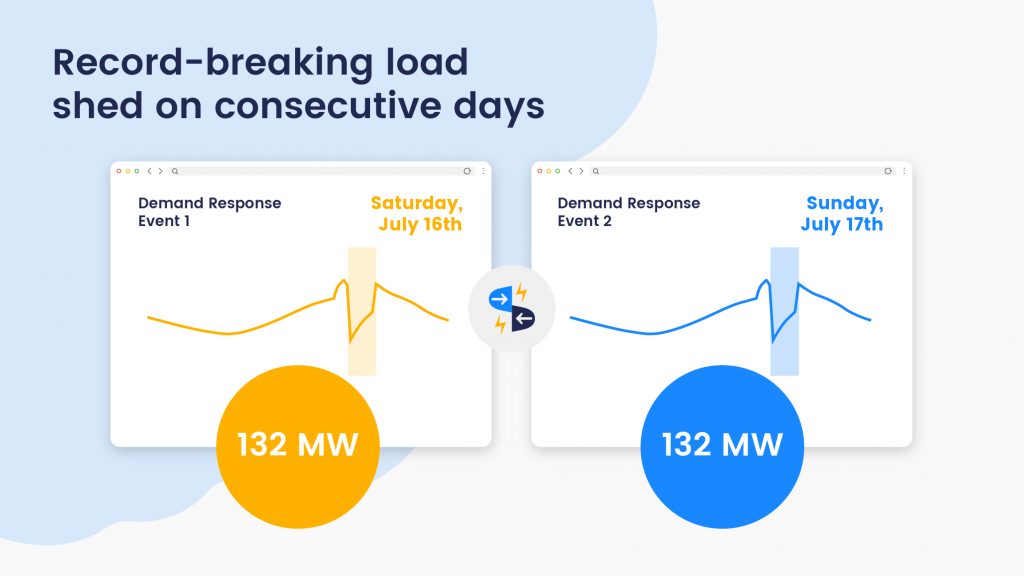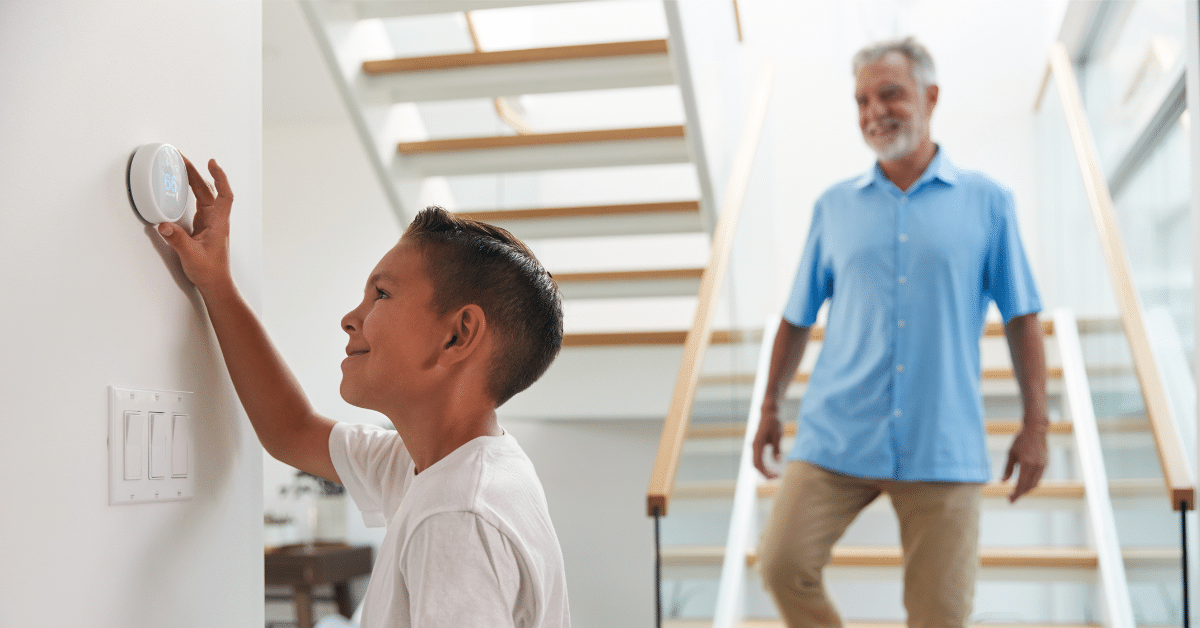
EnergyHub Team
November 3, 2022
In 2018, Salt River Project (SRP) and EnergyHub partnered on a Bring Your Own Thermostat (BYOT) pilot. In four years, SRP has transformed their demand response (DR) program from a pilot to a valuable part of the resource stack. They can now call on over 67,000 devices that consistently provide 82 MW of load flexibility, and at times much more. This summer, multiple events provided a record-shattering 132 MW of first hour load shift. We sat down with Eamonn Urey, Senior Product Manager at SRP, to talk about how they’ve grown their DR program and what comes next.

EnergyHub (EH): Why does SRP need grid-edge flexibility?
Eamonn Urey (EU): Put briefly, today’s dynamic environment requires grid-edge flexibility. We see it on the news and in changing weather patterns. And we see it in how we are switching from base load to renewable loads. Overall, we need more demand response capacity. EnergyHub has been able to help provide that for the last couple of years. We started with a pilot and have scaled up. Now we’re comfortable with the resource, and I can’t think of a better way to offer this model to our customers. The resource is part of our plan, and one we can count on.
EH: What have you done to enroll and keep customers?
EU: Today we have 67,000 enrolled devices, so we must be doing something right! Our customer programs are successful because we invest so much in customer satisfaction. For example, we have a dedicated Connected Homes Team which consists of specialized customer service representatives who focus on communicating the nuances of grid-edge programs to our customers. We also have high power reliability and outages measured in minutes. Finally, when it comes to cost, we charge $0.16 per kWh, which is low in the region, so we have that advantage.
Our dedication to customer service has paid off. 2021 marked the 20th consecutive year that SRP ranked number one for J.D. Power residential satisfaction in the Western United States among large electric utilities with 500,000+ residential households. SRP also ranked number one in business customer satisfaction.
Beyond this, specific things we’ve done for the BYOT initiative include marketplace pre-enrollment. That’s critical to supercharge enrollment, and 10,300 devices have been enrolled via that marketplace to date. We also have direct partnerships with OEMs to help market the program. Finally, limiting events to just two hours and creating a larger pool of pre-cool customers has promoted higher customer comfort, resulting in 75 percent fewer customer calls.

EH: How were you able to achieve over 130 MW multiple events?
EU: First, it helps to be in Arizona where so many customers are running HVAC!
The average compressor size is 4.28 kW of load, meaning there’s a higher capacity of load to drop in the first place. We needed extra weekend capacity and called an event on both Saturday, July 16th and Sunday, July 17, from 4 to 6pm. Another key thing is we started offering a three-degree pre-cooling to a larger pool of customers, while we shortened events to two hours and a four-degree event offset. EnergyHub’s team ran a model to show minimal cost impacts and a lot of load impact. This led to cooler homes and shorter events, which in turn meant fewer initial opt-outs and massive impacts like the 132 MW first hour load shift.
EH: What does it mean operationally to have a resource of this size?
EU: It means this program and our customers are now part of the resource stack, which is new territory for utilities. Before we got to this scale, operators and resource planners did not consider customer-based resources reliable. We have proven that assumption wrong by showing meaningful and reliable load reduction when called upon. Now our operators treat us like a physical generation asset and include us in Energy Imbalance Market (EIM) operations. This resource is like Babe Ruth calling his shot: we now have that level of reliable prediction of dispatchable flexibility.
EH: What’s next?
EU: We need to engage more segments of customers and more device types. We’re planning to send 11,500 energy efficiency toolkits, which including a pre-enrolled thermostat, to low-to-moderate income households, as part of our focus on equity. And we’re hoping to support this with an email and bill insert campaign to increase installation rates. I’m proud to say we’re the first in the country to expand BYOT to small and medium businesses, and to multi-family segments, with direct installation support. Finally, we’re looking to add other DER classes such as EVs and batteries, to our portfolio.
EH: Thanks for your time, Eamonn.
If you would like to connect with Eamonn directly to learn more about the SRP program, please email him at eamonn.urey@srpnet.com.
Interested in keeping up with the latest dispatch from the grid edge?
Get our next post in your inbox.


